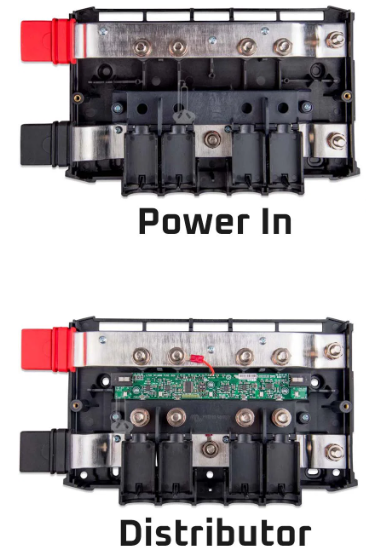In my set-up the 4/0AWG wires that connect the batteries to the [Battery Bank] Lynx Distributor do not feature fuses. There are fuses internal to the Lynx Distributor, but the wires are effectively unprotected until they reach the Lynx Distributor.
Of course, I’ll keep those runs as short as possible (less than two feet long per wire/conductor) but it still seems weird to me to have a wire run unprotected.
Should I have an MRBF, or similar, fuse directly on the battery terminals?
Should I be using a different fuse or circuit breaker to protect the wires between the batteries and the Lynx Distributor, or is the system safe as it's currently designed?
The wiring schematic in the Lynx Smart BMS doesn't show any fuses in that location.
The example schematic on the Victron Support site doesn't show any fuses here (https://www.victronenergy.com/upload/documents/MultiPlus-II-3KW-230VAC-12VDC-600Ah-Li-Lynx-Smart-BMS-&-distributors-Cerbo-GX-touch-generator-MPPT-Orion-Tr-Smarts.pdf).
On the other hand, this post (https://community.victronenergy.com/questions/108271/mega-fuse-arcing-dangers-lynx-distributor-li-batte.html) on the community makes me think I will need protection, if what that discussion says about Lithium batteries arcing past MEGA fuses is correct.

